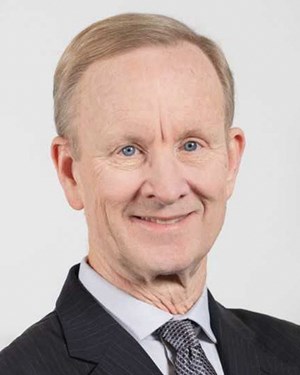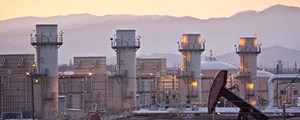Our industry is uniquely capable of mitigating climate change impacts

Greenhouse gas emissions from burning fossil fuels are resulting in increased CO2 and methane concentrations in the atmosphere and oceans and contributing to climate change in a material way. Unabated, increasingly severe impacts on human life can be expected over the course of the next few decades and throughout this century. Many of these impacts are largely inevitable, even with dramatic changes in human behavior.
Our only real choices in responding to climate change include mitigation, adaptation and suffering the consequences. In the words of John Holdren, who inspired much of this article, “We’re going to do some of each. The question is what the mix is going to be. The more mitigation we do, the less adaptation will be required and the less suffering there will be.” I am convinced that escaping mass suffering (particularly over the second half of the 21st century) will require a great deal of mitigation and adaptation. We will need “enough mitigation to avoid the unmanageable and enough adaptation to manage the unavoidable.”
Significant oil and especially gas production will be needed for many decades to come, and there is a very long-term need for natural gas. Mitigation includes reducing the pace and magnitude of climate change caused by human activities. Many of the mitigation and adaptation approaches are uniquely suited for oil and gas operators and oilfield service companies to implement, and I will only address those.
Mitigation needs include reducing emissions, increasing carbon sinks, and managing solar radiation. Reducing emissions includes eliminating routine flaring and making flaring brief, infrequent and efficient; radically reducing methane emissions from oil and gas production and transportation; equipping fossil fuel and biomass-fueled power plants with carbon capture use and sequestration (CCUS) technology; increasing hydrogen generation for use with fleet vehicles and heavy-duty vehicles and sustainable fuels for aircraft; and generation of low net emission marine methanol for large shipping vessels.
Increasing carbon sinks includes coupling CCUS with sustainably grown biofuels and developing technologies for economically capturing CO2 from the air. Although most renewable energy solutions are not unique to the oil and gas industry, offshore wind relies almost exclusively on technologies developed for deepwater field developments, including tension-leg platforms, spar buoys, etc. Mitigation strategies will also have to focus on large emissions from other sources.
Much greater CCUS needed. Global energy systems cannot change overnight or even over decades. Existing fossil fuel extraction, power generation and petrochemicals represent more than $30 trillion, and most of the facilities have replacement times of 20 to 40+ years. It is unlikely that such facilities will be abandoned while economic. Retrofitting ethanol plants, power plants, cement and steel plants, and other large CO2 emission sources will require radically larger CCUS applications.
Today we capture and store less than 50 Mtonnes of CO2 annually. One Mtonne/year is roughly 52 MMcfd for reference. Coupled with enormous increases in renewables and efficiency, the target for CCUS is almost 6 Gtonnes per year, roughly 100 times the current level. While many new projects have been announced and are progressing to FID, the rate is too slow. Most early applications for CCUS have been focused on enhanced oil recovery (Fig. 1), while most future applications will target saline aquifers.

While geological, geophysical, geomechanical, petrophysical and engineering technologies to assess saline aquifer storage capacity and injectivity over time are reasonably well-developed, they are far from optimized. Less clear is what technologies are required for monitoring CCUS projects.
Technologies include surface seismic (4D) monitoring; borehole seismic; distributed acoustic seismic and distributed temperature sensing; monitoring wells logged for temperature and changing fluid saturations; surface monitoring of air and soil; biological monitoring; surface flux monitoring; surface and groundwater testing; air concentration testing; monitoring of casing pressures; injection well logging; repeat bond logs; surface tilt monitoring; satellite monitoring (imagery and tilt); tracers; geochemistry, etc.
Sequestration motivation. CO2 emitters won’t capture and sequester CO2 for fun. There remain significant pressures on emitters from investors and lending sources; however, the real push will come from some combination of regulatory requirements, carbon taxes or financial rewards for sequestering carbon. Regardless of whether carrot or stick, governments and regulators will require proof that stored carbon remains in place. This will require technical and cost-effective monitoring.
Recent polls suggest that the vast majority of Americans believe climate change is real, that human activity is a significant driver, that things will get worse and that something should be done about it. Simultaneously, actions on climate change remain behind the economy, employment, inflation, and national security in importance. I am convinced that our industry is uniquely capable of mitigating the impacts of climate change and can and will remain relevant in the world’s energy future. WO



